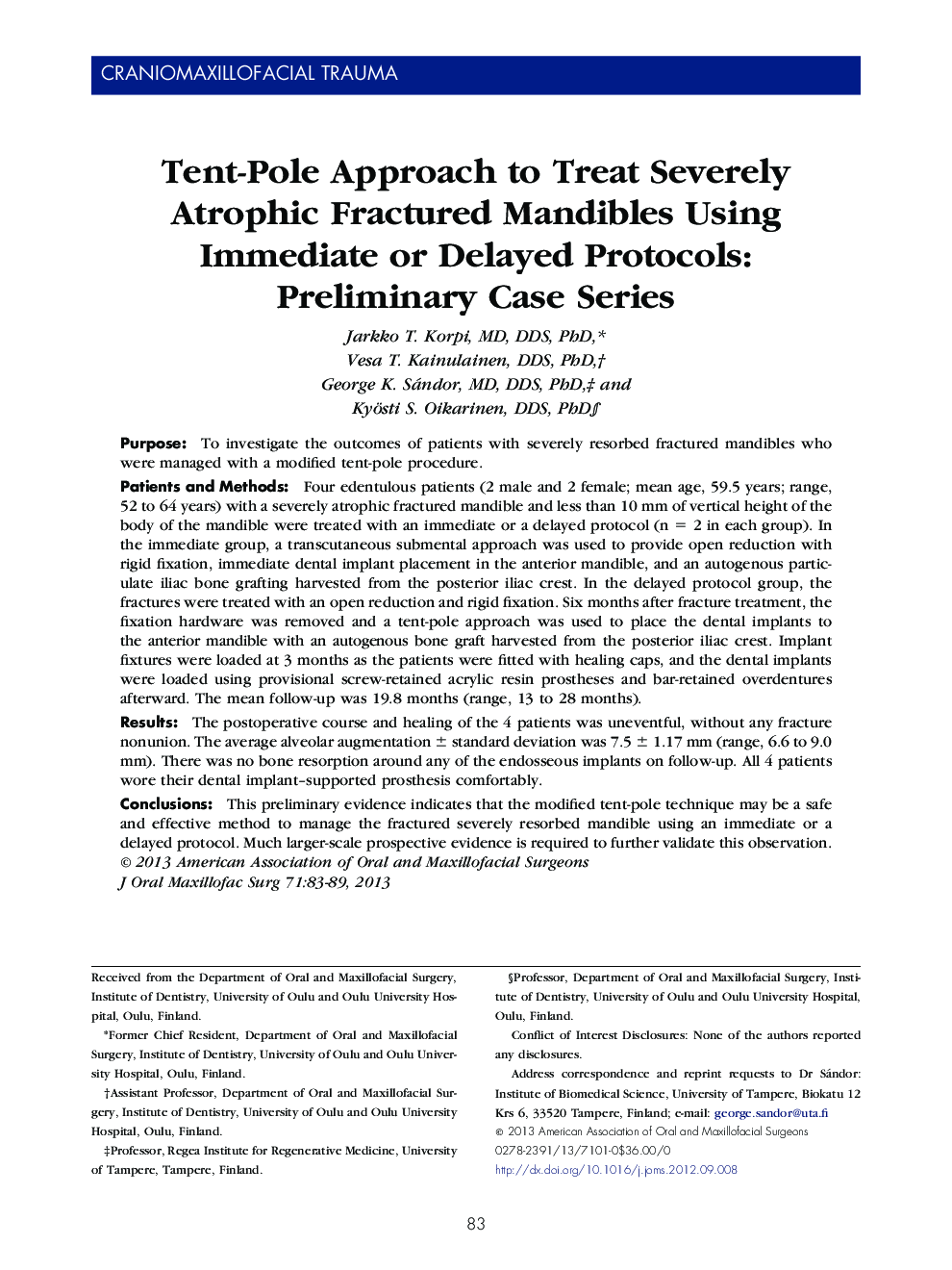| Article ID | Journal | Published Year | Pages | File Type |
|---|---|---|---|---|
| 3158016 | Journal of Oral and Maxillofacial Surgery | 2013 | 7 Pages |
PurposeTo investigate the outcomes of patients with severely resorbed fractured mandibles who were managed with a modified tent-pole procedure.Patients and MethodsFour edentulous patients (2 male and 2 female; mean age, 59.5 years; range, 52 to 64 years) with a severely atrophic fractured mandible and less than 10 mm of vertical height of the body of the mandible were treated with an immediate or a delayed protocol (n = 2 in each group). In the immediate group, a transcutaneous submental approach was used to provide open reduction with rigid fixation, immediate dental implant placement in the anterior mandible, and an autogenous particulate iliac bone grafting harvested from the posterior iliac crest. In the delayed protocol group, the fractures were treated with an open reduction and rigid fixation. Six months after fracture treatment, the fixation hardware was removed and a tent-pole approach was used to place the dental implants to the anterior mandible with an autogenous bone graft harvested from the posterior iliac crest. Implant fixtures were loaded at 3 months as the patients were fitted with healing caps, and the dental implants were loaded using provisional screw-retained acrylic resin prostheses and bar-retained overdentures afterward. The mean follow-up was 19.8 months (range, 13 to 28 months).ResultsThe postoperative course and healing of the 4 patients was uneventful, without any fracture nonunion. The average alveolar augmentation ± standard deviation was 7.5 ± 1.17 mm (range, 6.6 to 9.0 mm). There was no bone resorption around any of the endosseous implants on follow-up. All 4 patients wore their dental implant–supported prosthesis comfortably.ConclusionsThis preliminary evidence indicates that the modified tent-pole technique may be a safe and effective method to manage the fractured severely resorbed mandible using an immediate or a delayed protocol. Much larger-scale prospective evidence is required to further validate this observation.
